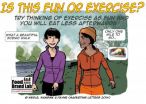(Press-News.org) (CHICAGO) – Neurological scientists at Rush University Medical Center have found that using cinnamon, a common food spice and flavoring material, can reverse the biomechanical, cellular and anatomical changes that occur in the brains of mice with Parkinson's disease (PD). The results of the study were recently published in the June 20 issue of the Journal of Neuroimmune Pharmacology.
"Cinnamon has been used widely as a spice throughout the world for centuries," said Kalipada Pahan, PhD, study lead researcher and the Floyd A. Davis professor of neurology at Rush. "This could potentially be one of the safest approaches to halt disease progression in Parkinson's patients."
"Cinnamon is metabolized in the liver to sodium benzoate, which is an FDA-approved drug used in the treatment for hepatic metabolic defects associated with hyperammonemia," said Pahan. It is also widely used as a food preservative due to its microbiocidal effect.
Chinese cinnamon (Cinnamonum cassia) and original Ceylon cinnamon (Cinnamonum verum) are two major types of cinnamon that are available in the US.
"Although both types of cinnamon are metabolized into sodium benzoate, by mass spectrometric analysis, we have seen that Ceylon cinnamon is much more pure than Chinese cinnamon as the latter contains coumarin, a hepatotoxic molecule," said Pahan.
"Understanding how the disease works is important to developing effective drugs that protect the brain and stop the progression of PD," said Pahan. "It is known that some important proteins like Parkin and DJ-1 decrease in the brain of PD patients."
The study found that after oral feeding, ground cinnamon is metabolized into sodium benzoate, which then enters into the brain, stops the loss of Parkin and DJ-1, protects neurons, normalizes neurotransmitter levels, and improves motor functions in mice with PD.
This research was supported by grants from National Institutes of Health.
"Now we need to translate this finding to the clinic and test ground cinnamon in patients with PD. If these results are replicated in PD patients, it would be a remarkable advance in the treatment of this devastating neurodegenerative disease," said Dr. Pahan.
Parkinson's disease is a slowly progressive disease that affects a small area of cells within the mid-brain known as the substantia nigra. Gradual degeneration of these cells causes a reduction in a vital chemical neurotransmitter, dopamine. The decrease in dopamine results in one or more of the classic signs of Parkinson's disease that includes: resting tremor on one side of the body; generalized slowness of movement; stiffness of limbs; and gait or balance problems. The cause of the disease is unknown. Both environmental and genetic causes of the disease have been postulated.
Parkinson's disease affects about 1.2 million patients in the United States and Canada. Although 15 percent of patients are diagnosed before age 50, it is generally considered a disease that targets older adults, affecting one of every 100 persons over the age of 60. This disease appears to be slightly more common in men than women.
INFORMATION: END
Cinnamon may be used to halt the progression of Parkinson's disease
Study results published in the Journal of Neuroimmune Pharmacology
2014-07-09
ELSE PRESS RELEASES FROM THIS DATE:
Rockefeller scientists first to reconstitute the DNA 'replication fork'
2014-07-09
When a cell divides, it must first make a copy of its DNA, a fundamental step in the life cycle of cells that occurs billions of times a day in the human body. While scientists have had an idea of the molecular tools that cells use to replicate DNA—the enzymes that unzip the double-stranded DNA and create "daughter" copies—they did not have a clear picture of how the process works.
Now, researchers at Rockefeller University have built the first model system to decipher what goes on at the "replication fork"—the point where DNA is split down the middle in order to create ...
Discovery of a new means to erase pain
2014-07-09
Québec City, July 9, 2014 – A study published in the scientific journal Nature Neuroscience by Yves De Koninck and Robert Bonin, two researchers at Université Laval, reveals that it is possible to relieve pain hypersensitivity using a new method that involves rekindling pain so that it can subsequently be erased. This discovery could lead to novel means to alleviate chronic pain.
The researchers from the Faculty of Medicine at Université Laval and Institut universitaire en santé mentale de Québec (IUSMQ) were inspired by previous work on memory conducted some fifteen ...
Nearly 50 percent of grade 12 students in Ontario report texting while driving
2014-07-09
EMBARGOED - July 9, 2014, 3:01 a.m. ET (Toronto) – An ongoing survey of Ontario students in grades 7 to 12 conducted for Canada's Centre for Addiction and Mental Health (CAMH) reveals a number of significant behavioural trends, including an alarming number of young people who are texting while driving.
According to the 2013 Ontario Student Drug Use and Health Survey (OSDUHS) Mental Health and Well-Being Report, over one-third of licensed Ontario students in grades 10 to12 – an estimated 108,000 adolescent drivers – report texting while driving at least once in the past ...
Study finds kidney donation safe for healthy older adults
2014-07-09
Older kidney donors enjoy similar longevity and cardiovascular health as other healthy mature individuals, according to a new study published in the American Journal of Transplantation. The findings may provide some reassurance to older individuals considering donation and the transplant professionals caring for them.
Over the past two decades, live kidney donation by individuals aged 55 years and older has become more common. Given the links between older age, kidney disease, and heart disease, the removal of a kidney could make older donors vulnerable to premature death ...
For corals adapting to climate change, it's survival of the fattest -- and most flexible
2014-07-09
COLUMBUS, Ohio—The future health of the world's coral reefs and the animals that depend on them relies in part on the ability of one tiny symbiotic sea creature to get fat—and to be flexible about the type of algae it cooperates with.
In the first study of its kind, scientists at The Ohio State University discovered that corals—tiny reef-forming animals that live symbiotically with algae—are better able to recover from yearly bouts of heat stress, called "bleaching," when they keep large energy reserves—mostly as fat—socked away in their cells.
"We found that some coral ...
Mode of delivery following a perineal tear and recurrence rate in subsequent pregnancies
2014-07-09
There is an increased risk of severe perineal tearing during childbirth in women who had such a tear in a previous delivery, suggests a new study published today (9 July) in BJOG: An International Journal of Obstetrics and Gynaecology (BJOG).
This study, investigates among women who have had a third or fourth degree perineal tear, the mode of delivery in subsequent pregnancies and the recurrence of severe perineal tears.
Most women tear to some extent during childbirth and in some women the tear may be more extensive. A third degree tear extends downwards from the ...
Fun or exercise?
2014-07-09
Think of your next exercise workout as a "fun run" or as a well-deserved break, and you'll eat less afterward. Think of it as exercise or as a workout and you'll later eat more dessert and snacks to reward yourself.
These new findings from the Cornell Food and Brand Lab study involved two studies where adults were led on a 2 km walk around a small lake and were either told it was going to be an exercise walk or a scenic walk. In the first study, 56 adults completed their walk and were then given lunch. Those who believed they had been on an exercise walk served and ...
New plant species from the heart of Texas
2014-07-09
SALT LAKE CITY, July 9, 2014 – Collectors found the first two specimens of the prickly plant in 1974 and 1990 in west Texas. Then, for two decades, the 14-inch-tall plant was identified wrongly as one species, then another and then a third.
Now – after a long search turned up a "pathetic, wilted" third specimen – a University of Utah botanist and her colleagues identified the spiny plant as a new, possibly endangered species and named it "from the heart" in Latin because it was found in Valentine, Texas, population 134 in 2010.
Most new plant species are found in the ...
Minimally invasive surgery underused at many US hospitals
2014-07-09
Hospitals across the country vary substantially in their use of minimally invasive surgery, even when evidence shows that for most patients, minimally invasive surgery is superior to open surgery, a new study shows. The finding represents a major disparity in the surgical care delivered at various hospitals, the study's authors say, and identifies an area of medicine ripe for improvement.
"Some surgeons specialize in complex open operations, and we should endorse that expertise," says Marty Makary, M.D., M.P.H., a professor of surgery at the Johns Hopkins University School ...
Carbon monoxide predicts 'red and dead' future of gas guzzler galaxy
2014-07-09
Astronomers have studied the carbon monoxide in a galaxy over 12 billion light years from Earth and discovered that it's running out of gas, quite literally, and headed for a 'red and dead' future.
The galaxy, known as ALESS65, was observed by the Atacama Large Millimeter Array (ALMA) in 2011 and is one of less than 20 known distant galaxies to contain carbon monoxide.
Dr Minh Huynh from The University of Western Australia node of the International Centre for Radio Astronomy Research (ICRAR) led the team on their search for galactic carbon monoxide in work published ...
LAST 30 PRESS RELEASES:
Norbert Holtkamp appointed director of Fermi National Accelerator Laboratory
New agentic AI platform accelerates advanced optics design
Biologists discover neurons use physical signals — not electricity — to stabilize communication
Researchers discover that a hormone can access the brain by hitchhiking
University of Oklahoma researcher awarded funding to pursue AI-powered material design
Exploring how the visual system recovers following injury
Support for parents with infants at pediatric check-ups leads to better reading and math skills in elementary school
Kids’ behavioral health is a growing share of family health costs
Day & night: Cancer disrupts the brain’s natural rhythm
COVID-19 vaccination significantly reduces risk to pregnant women and baby
The role of vaccination in maternal and perinatal outcomes associated with COVID-19 in pregnancy
Mayo Clinic smartwatch system helps parents shorten and defuse children's severe tantrums early
Behavioral health spending spikes to 40% of all children’s health expenditures, nearly doubling in a decade
Digital cognitive behavioral treatment for generalized anxiety disorder
Expenditures for pediatric behavioral health care over time and estimated family financial burden
Air conditioning in nursing homes and mortality during extreme heat
The Alps to lose a record number of glaciers in the next decade
What makes a good proton conductor?
New science reporting guide published for journalists in Bulgaria
New international study reveals major survival gaps among children with cancer
New science reporting guide published for journalists in Turkey
Scientists develop a smarter mRNA therapy that knows which cells to target
Neuroanatomy-informed brain–machine hybrid intelligence for robust acoustic target detection
Eight SwRI hydrogen projects funded by ENERGYWERX
The Lundquist Institute and its start-up company Vitalex Biosciences Announces Strategic Advancement of Second-Generation fungal Vaccine VXV-01 through Phase 1 Trials under $40 Million Competitive Con
Fine particles in pollution are associated with early signs of autoimmune disease
Review article | Towards a Global Ground-Based Earth Observatory (GGBEO): Leveraging existing systems and networks
Penn and UMich create world’s smallest programmable, autonomous robots
Cleveland researchers launch first major study to address ‘hidden performance killer’ in athletes
To connect across politics, try saying what you oppose
[Press-News.org] Cinnamon may be used to halt the progression of Parkinson's diseaseStudy results published in the Journal of Neuroimmune Pharmacology



